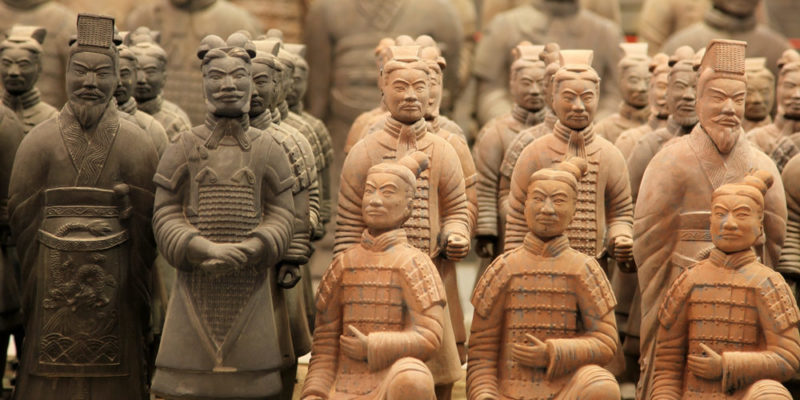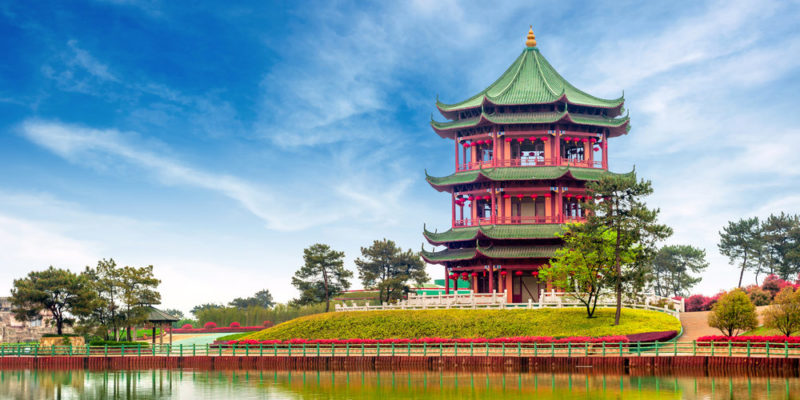We explain everything about China, what its dynasties were and what its population and geography are like. In addition, its characteristics, economy and more.
What is China?
The current People's Republic of China, commonly known as China, is one of the largest , most populous and culturally richest countries on the planet . It is one of only six known cradles of civilization, along with Egypt , Mesopotamia , India , Mesoamerica , and the South American Andean Region.
The history of China dates back to its habitation by human beings almost 460,000 years ago , going through a good number of monarchical dynasties that ruled and unified its territory from the year 200 BC. C., until its transformation in the Modern Age into a republic and, later, into a Republic of the Communist Court as a result of its Civil War.
China has held an important place in the imagination of Western cultures , as a place of ancient secrets and secret knowledge . This despite the fact that its enormous migration has taken Chinese citizens to all corners of the world and with them, above all, its gastronomy.
First inhabitants of China
It is estimated that the first settlers of present-day China were the so-called "Peking man", a form of Homo erectus (the sinantrhropus pekinensis ) that existed almost 500,000 years ago. Its discovery between 1921 and 1937 was important evidence in defense of the Theory of evolution .
The first proper human dynasties in China date back to 2205 BC. C. _ approximately, and they had the Xia as rulers; although the first dynasty to leave true historical records was the Shang, between the 17th and 11th centuries BC. c.
Chinese dynasties

Chinese monarchies succeeded one another in controlling the territory for millennia . Of the first (Xia and Shang) hardly any historical records are preserved, although the first signs of a writing that contemplated forms similar to traditional Chinese characters are attributed to the latter. The Chinese dynasties were the following:
- Xia dynasty (about 2205 BC)
- Shang dynasty (1766 – 1027 BC)
- Zhou dynasty (1027 – 256 BC)
- Quin Dynasty (255 – 206 BC)
- Western Han Dynasty (206 BC – 9 AD)
- Xin Dynasty (9 – 23 AD)
- Eastern Han Dynasty (25 -206 AD)
- Sui dynasty (581 – 617 C.)
- Tang Dynasty (618 – 907 AD)
- Northern Song dynasty (960–1120 AD)
- Southern Song dynasty (1120–1279 AD)
- Yuan Dynasty (1279 – 1368 AD)
- Ming dynasty (1368 – 1644 AD)
- Quing or Manchu dynasty (1644 – 1912 AD)
chinese population

China's current population is 1.3 billion , making it the most populous country in the world. This population recognizes 56 different ethnic groups, of which the Han group is the most abundant. The most populous city in China is Shanghai, with 20 million inhabitants, one of the most populous in the world.
Chinese territory
China extends over 9,596,960 km 2 of surface , which gives it borders with fourteen different countries, and makes this nation the third largest on the planet after Russia and Canada. In the geography occupied by this country it is possible to find all existing climates , as well as an immense variety of reliefs and topographies, from plateaus and mountains , to islands and tropical forests.
Chinese language

The Chinese language is actually the composition of a series of Sino-Tibetan dialects , of which Mandarin is the most frequent and commonly spoken (70% of the population), compared to others such as Wu, Yue, Min, Xiang , gan and hakka. For this reason, the official language of China is standard Mandarin, from the language spoken in Beijing.
The writing of this language is currently done in simplified Chinese characters , which replaced the traditional Chinese characters since 1956, which dated back thousands of years and allowed the written communication of the various Chinese kingdoms, despite the dialectal diversity.
Political organization of China
The Chinese territory is made up of twenty-two provinces , five autonomous regions, four municipalities under central jurisdiction, and two special administration regions . The Chinese government also claims jurisdiction over Taiwan, which is currently a political dispute between the People's Republic of China and the Republic of China, whose territory is limited to Taiwan and some Pacific islands.
From 1912 China abandoned its monarchical model in favor of a republican one, until it was occupied by the Japanese Empire in World War II . After the defeat and withdrawal of the latter in 1945, tensions between nationalist and socialist groups led to a civil war in which a one-party socialist government led by Mao Tse Tung was imposed in 1949.
Chinese economy

Despite being a communist regime, the Chinese economy is currently one of the most robust in the world , which is why it has been considered an emerging superpower for decades. China is the largest exporter and importer of goods in the world, as well as the first recognized industrial power. It is also the second power in terms of nominal Gross Domestic Product , and manages the second largest military budget in the world, after the United States.
chinese religiosity

The Chinese constitution enshrines the right to freedom of worship, since it is a secular state . However, his particular religiosity consists of a syncretism between three main doctrines: Confucianism, Buddhism and Taoism. In much lower proportions, it is possible to find Christian and Muslim settlers.
Main cities of China
The main Chinese cities are:
- Shanghai. With more than 20,000,000 inhabitants.
- Beijing. With around 18,000,000 inhabitants.
- Canton-Foshan. With about 17,000,000 inhabitants.
- Shenzhen. With more than 12,000,000 inhabitants.
- Tianjin. With more than 9,000,000 inhabitants.
Chinese importance

Chinese culture is of great historical importance, given its great infrastructure works (bridges, temples, the Great Wall of China) and the invention of writing, gunpowder, silkworm breeding, the compass and numerous other implements, techniques and knowledge that still provide them with an aura of mystery, wisdom and transcendence for Western culture .
The above content published at Collaborative Research Group is for informational and educational purposes only and has been developed by referring reliable sources and recommendations from technology experts. We do not have any contact with official entities nor do we intend to replace the information that they emit.
Passionate about understanding and contributing to a world that does not stop changing. New forms of Work, Sustainability and Technology. For many years he has worked as a creative for large international companies. He has a Ph.D. in information technology and he has been doing quantitative research in the interdisciplinary areas of information systems, cyber security, data analytics and artificial intelligence. He continue to look for creative solutions through technology to help companies to be more humane and sustainable..
Leave a reply
Your email address will not be published. Required fields are marked *Recent post

Sport: What Is It, Types, Risks, Features, Characteristics and Examples

Dogs: Emergence, Features, Characteristics, Feeding and Breeds

Story: Definition, Elements, Structure, Features and Characteristics

